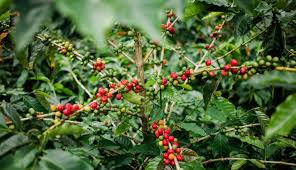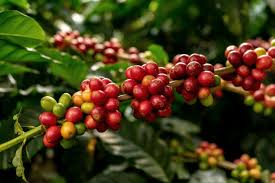Coffee is the second most traded tropical commodity in value worldwide, after oil. It serves as Uganda’s major cash crop, contributing significantly to foreign exchange earnings and employment creation. As a coffee producer, Uganda ranks second in Africa, after Ethiopia, and eighth globally.
Coffee has played a critical role in Uganda’s economy, contributing between 20% and 30% of foreign exchange earnings, despite the government’s efforts to diversify the economy. Coffee is grown by 1.7 million households, with the industry employing over 5 million people through various coffee value chain activities.
The country’s target is to achieve lower-middle-income status by 2040, with an income level of about Ushs 20 million per household. Arabica coffee provides an excellent opportunity to help achieve this goal.
With proper investment and management, income from one hectare of Arabica coffee can exceed Ushs 10 million per year.
Read Also: 12 Medicinal Health Benefits Of Renealmia alpinia (Pink cone ginger)
Government Policy and Strategy for the Coffee Sub-sector

The coffee industry was liberalized in 1991, allowing anyone to engage in business at any level within the sub-sector, provided they comply with the Coffee Regulations of 1994. Coffee research is centralized under NARO (National Agricultural Research Organization) through the National Coffee Research Institute (NACORI) in Kituza, Mukono District.
Coffee extension services are also centralized under the Ministry of Agriculture, Animal Industry, and Fisheries (MAAIF), provided by UCDA’s coffee-specific extension in collaboration with other agencies like the National Agricultural Advisory Services (NAADS), local governments, coffee associations, private sector, NGOs, farmer organizations/cooperatives, and individual farmers.
Arabica coffee production can be expanded or introduced in new areas of Uganda. The contribution of Arabica coffee to Uganda’s exports and foreign exchange earnings has increased significantly, from 8.2% in 1991/1992 to 23% in the 2017/2018 Coffee Year in quantity and from 14% to 28% in US dollar value.
In line with the government’s policy, production is being boosted in traditional Arabica-growing zones and expanded to new areas. The rapid replacement of old, low-productivity Arabica coffee with high-yielding, quick-maturing, and disease-tolerant varieties is encouraged.
Farmers are being encouraged to adopt high-yielding Arabica varieties, implement good husbandry practices, and engage in marketing through their Farm Level Organizations (FLOs) or cooperatives to benefit from collective bargaining power.
The coffee roadmap aims to increase production of quality coffee from the current 6 million bags to 20 million bags, positioning Uganda as one of the top global coffee producers. It targets to increase yield by 3 to 4 times and expand the production area by 20%, with 5% in traditional areas and 25% in new areas.
Additionally, the roadmap seeks to expand the middle stratum of commercial farmers from 10% to 65%, while reducing smallholders from 85% to 25% by 2040. Public-private partnerships and collaborations are crucial to creating an enabling environment for these goals.
Recommended Practices for Economic Success in Coffee Production

To fully realize the economic benefits from coffee production and attain the government’s goal of middle-income status by 2040, it is essential that good agronomic and post-harvest practices are applied by all stakeholders in the coffee industry.
These practices include acquiring quality planting material, adopting proper husbandry, applying effective pest and disease control methods, ensuring proper post-harvest handling, and viewing coffee production as a business. This Arabica Coffee Production Handbook serves as a guide for all these aspects.
Characteristics of Arabica Coffee and Its Importance
Arabica coffee can grow up to 12 meters high in the wild, with dark green, oval, or oblong leaves. It produces bright red berries containing two seeds. Arabica beans contain less caffeine than Robusta beans.
Arabica coffee thrives in warm, temperate environments, typically at altitudes between 1,300 and 2,500 meters. While the plants can grow to around 5 meters in height, commercial plants are usually kept shorter.
The leaves are dark green, and the plants produce white flowers and deep red berries. Farmers pick the berries, remove the flesh, leaving only the beans, which are then washed, dried, and sold.
In Uganda, the four recommended and authorized elite Arabica coffee varieties are SL 14, SL28, KP423, and KP162. Benefits of growing Arabica coffee include:
1. Superior Quality and Price: Arabica coffee is known for its high quality, which makes it more competitive in international markets.
2. Gourmet Coffee Production: Most premium coffee is produced from 100% Arabica beans.
3. Compatibility with Other Crops: Arabica coffee can be integrated well with other crops on the farm, increasing returns to the farmer.
4. Health Benefits: Arabica coffee is a beverage with documented health benefits.
Read Also: 16 Medicinal Health Benefits Of Scleromitrion diffusum (Spreading Diamond Flower)
Arabica Coffee Growing Zones in Uganda

Arabica coffee is one of the two major coffee types grown in Uganda, contributing 20% of the country’s coffee volume. It is grown in highland areas on the slopes of Mount Elgon in the East, Mount Rwenzori in the West, Mount Muhabura in the South-West, and the Okoro Highlands in West Nile, as well as other highland areas at altitudes ranging from 1,200 to 2,500 meters above sea level.
Arabica coffee is an introduced crop, originally from Ethiopia. Arabica coffee is highly competitive in international markets due to its superior quality and often commands better prices. It is grown in 44 districts, with 28 districts growing only Arabica, while 15 districts cultivate both Arabica and Robusta coffee.
Current production stands at about 4.2 million bags, with 80% of the production being Robusta and 20% Arabica, which yields an average of 0.3 kg of clean coffee per tree annually.
Arabica Coffee Varieties in Uganda
The National Agricultural Research Organization (NARO) has improved and released 7 varieties of coffee that are high-yielding and resistant to coffee wilt disease. These varieties, along with their descriptions, release years, and key attributes, are as follows:
Table: Arabica Coffee Varieties
| Arabica Coffee Variety | Description | Year of Release | Current Status | Major Attributes | Remarks |
|---|---|---|---|---|---|
| SL14 | Barboun. East African varieties from Muguga Quarantine Station. Released after Scotts laboratory testing for cup quality. | 1950/60s | Contemporary variety | Yield up to 2,000kg/cc/ha/yr; Good cup quality; big beans | Highly susceptible to leaf rust. Less susceptible to CBD than KP lines. Recommended for medium to high altitude areas. |
| SL28 | Barboun. East African varieties from Muguga Quarantine Station. Released after Scotts laboratory testing for cup quality. | 1950/60s | Limited distribution due to high susceptibility to leaf rust and CBD | Yield up to 2,000kg/cc/ha/yr; Good cup quality; big beans | Very susceptible to leaf rust and CBD. Not recommended for cultivation. |
| KP423 | Kent. East African variety | 1950/60s | Contemporary variety | Yield up to 2,000kg/cc/ha/yr; Good cup quality; big beans | Very susceptible to CBD but less susceptible to leaf rust. Recommended for medium altitude. |
| KP162 | Kent. East African variety | 1950/60s | Limited distribution due to high susceptibility to leaf rust and CBD | Yield up to 2,000kg/cc/ha/yr; Good cup quality; big beans | Very susceptible to leaf rust and CBD. Not recommended for commercial cultivation. |
| Variety Ruiru II | A compact, high-yielding variety developed in Kenya for more intensive coffee production with fewer losses from diseases and pests. | 1985 | High yielding dwarf hybrid grown by a small number of small-scale farmers in Mt. Elgon area | High yielding, dwarf hybrid | Tolerant to coffee leaf rust and resistant to coffee berry disease. |
| Variety Catimor 129 | Dwarf variety with large bean size, grown by a small number of small-scale farmers in Mt. Elgon area | 1970 | Grown by a small number of small-scale farmers in Mt. Elgon area | Requires careful management to maximize yield without overbearing | Resistant to coffee leaf rust and coffee berry disease. Not popular among farmers due to its high demand for feeding and lightness of the bean/cherry. |
Do you have any questions, suggestions, or contributions? If so, please feel free to use the comment box below to share your thoughts. We also encourage you to kindly share this information with others who might benefit from it. Since we can’t reach everyone at once, we truly appreciate your help in spreading the word. Thank you so much for your support and for sharing!

